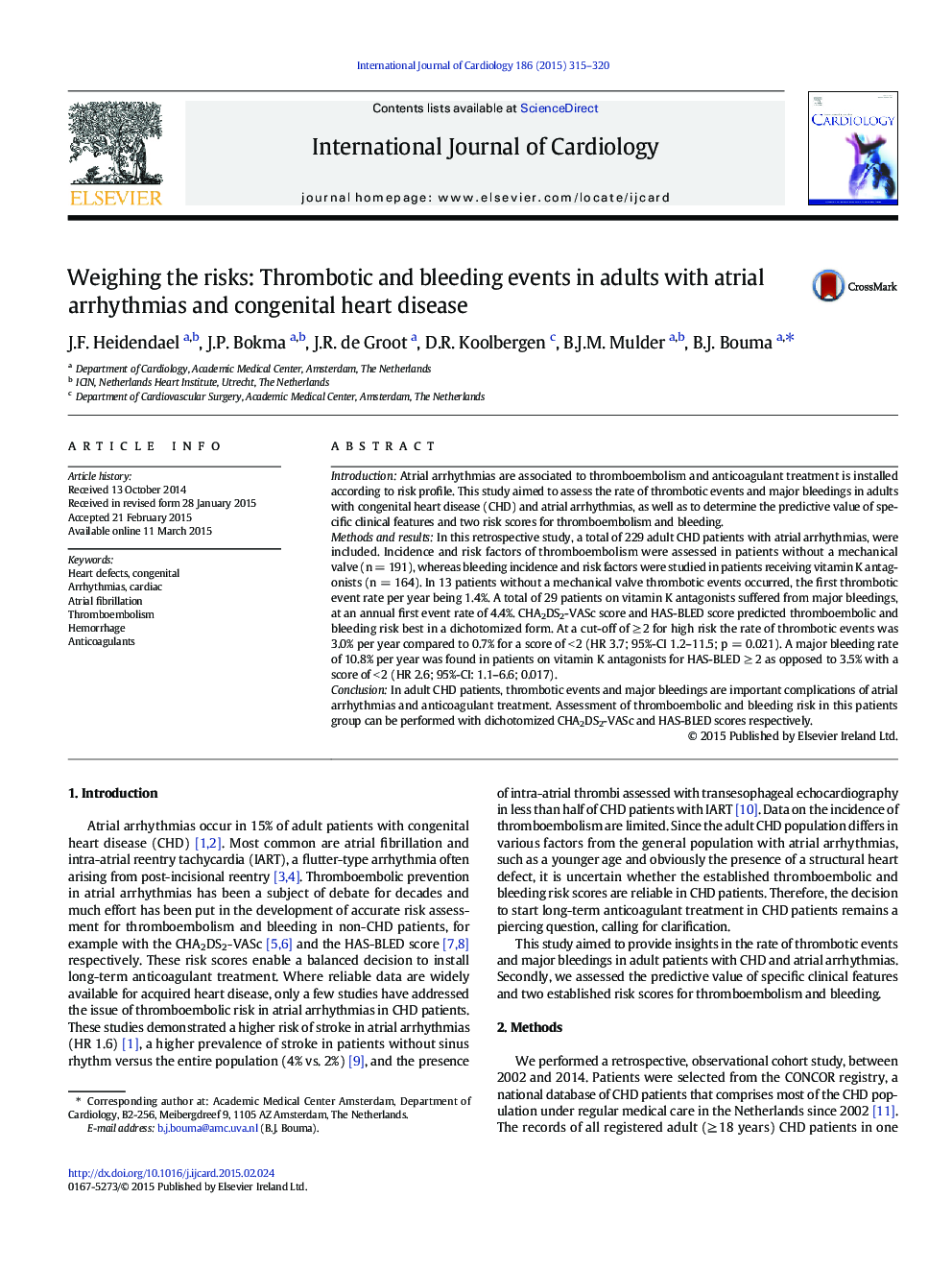| Article ID | Journal | Published Year | Pages | File Type |
|---|---|---|---|---|
| 5967668 | International Journal of Cardiology | 2015 | 6 Pages |
IntroductionAtrial arrhythmias are associated to thromboembolism and anticoagulant treatment is installed according to risk profile. This study aimed to assess the rate of thrombotic events and major bleedings in adults with congenital heart disease (CHD) and atrial arrhythmias, as well as to determine the predictive value of specific clinical features and two risk scores for thromboembolism and bleeding.Methods and resultsIn this retrospective study, a total of 229 adult CHD patients with atrial arrhythmias, were included. Incidence and risk factors of thromboembolism were assessed in patients without a mechanical valve (n = 191), whereas bleeding incidence and risk factors were studied in patients receiving vitamin K antagonists (n = 164). In 13 patients without a mechanical valve thrombotic events occurred, the first thrombotic event rate per year being 1.4%. A total of 29 patients on vitamin K antagonists suffered from major bleedings, at an annual first event rate of 4.4%. CHA2DS2-VASc score and HAS-BLED score predicted thromboembolic and bleeding risk best in a dichotomized form. At a cut-off of â¥Â 2 for high risk the rate of thrombotic events was 3.0% per year compared to 0.7% for a score of < 2 (HR 3.7; 95%-CI 1.2-11.5; p = 0.021). A major bleeding rate of 10.8% per year was found in patients on vitamin K antagonists for HAS-BLED â¥Â 2 as opposed to 3.5% with a score of < 2 (HR 2.6; 95%-CI: 1.1-6.6; 0.017).ConclusionIn adult CHD patients, thrombotic events and major bleedings are important complications of atrial arrhythmias and anticoagulant treatment. Assessment of thromboembolic and bleeding risk in this patients group can be performed with dichotomized CHA2DS2-VASc and HAS-BLED scores respectively.
